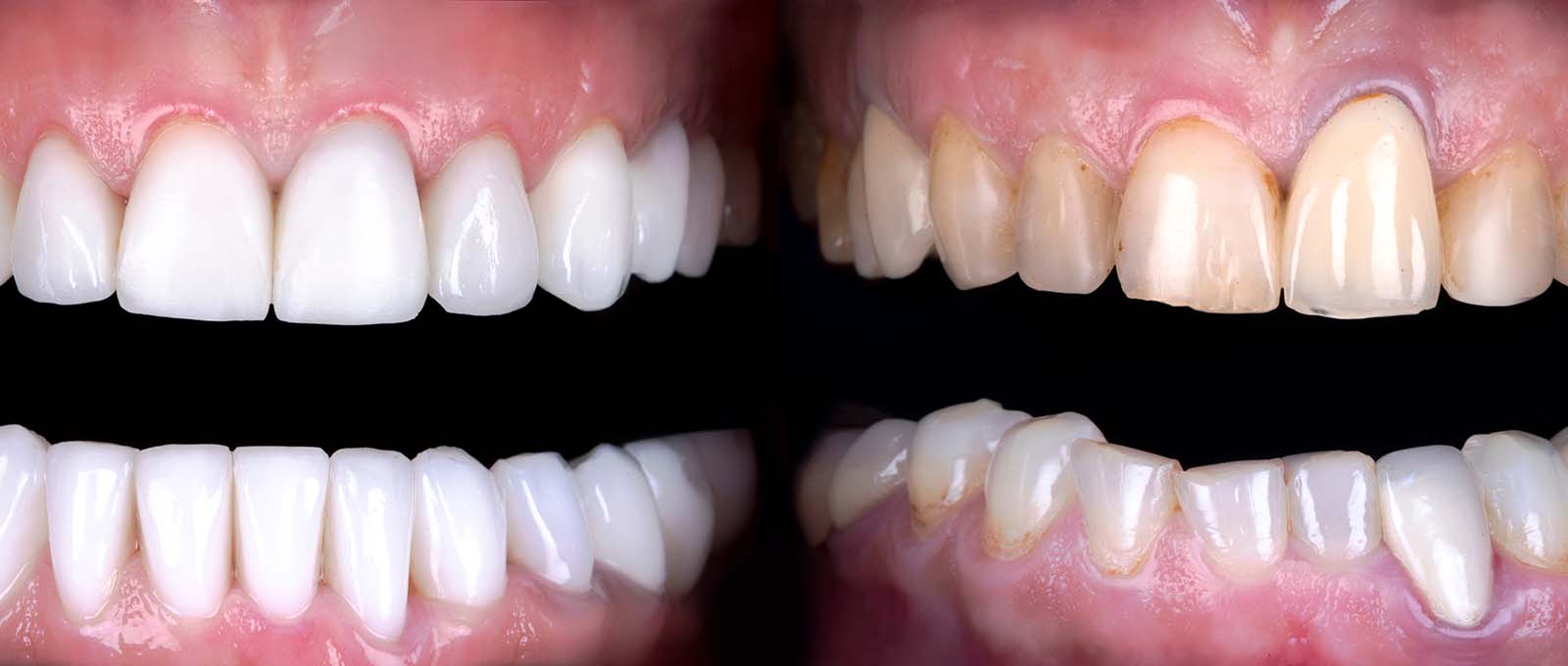Veneers are custom made, tooth colors and thin shells that your dentist can place them on top of your front teeth. Veneers look like natural teeth and are durable. They are one of the best smile makeover solutions in 2022.
If you have chipped teeth, worn teeth, or a misshaped tooth, you might not smile as often as you once did. Worse yet, those teeth could be at risk of further damage.
Fortunately, you don’t have to live with this problem. That’s because dental veneers may be the right solution for your mouth. Indeed, they can be an excellent alternative to real teeth.
Understandably, patients often have many questions about veneers. What do veneers look like? Are veneers good for teeth? What are porcelain veneers and composite veneers? And how are veneers fitted to your teeth?
Let’s take a closer look at dental veneers: how they work, how they’re applied, and what these cosmetic dentistry products could do for you.
Benefits of Dental Veneers
Dental veneers come with a wide range of advantages, including the following:
- Veneers look realistic.
- They’re durable.
- They don’t stain easily.
- They’ll make your teeth look brighter.
- They’re comfortable to have on.
- They’re fairly easy to apply.
A Closer Look at What Veneers Are
Basically, veneers are shells for teeth. They’re thin and unobtrusive, and they’re the color of enamel. They’re made of porcelain or a composite resin. And your veneers will be customized to fit your teeth.
Once in place, composite and porcelain veneers protect and restore the appearance of misshaped, broken, or chipped teeth. Veneers can also fill in a gap between your teeth.
You might get a veneer for a single tooth. Or, if you have several uneven teeth in a row, you could get several consecutive veneers. As a result, your teeth will appear to line up perfectly. If those teeth happen to be front teeth, your veneers will really upgrade your smile.
What Are Composite Resin Veneers?
Composite resin veneers are a cost-effective alternative to porcelain veneers. You might have these veneers attached in just one appointment. Moreover, your dentist won’t have to remove as much enamel to bond them.
To attach your composite veneers, your dentist will start by cleaning and preparing your teeth. If necessary, your teeth will also be reshaped a little. Your dentist will then use one of two methods.
With direct composite veneers, dentists attach the composite resin material straight to the teeth. With indirect composites, lab technicians make the veneers. Later, dentists apply those indirect composite veneers with an adhesive.
Indirect composite veneers are a little more expensive. But they’re also somewhat tougher than direct composites.
Either way, composite resin isn’t quite as hard-wearing as porcelain. On the bright side, if your composite veneers are broken, it’s usually a fast and simple process to fix them.
[ Learn more about Porcelain Veneers ]Veneers Before & Afters
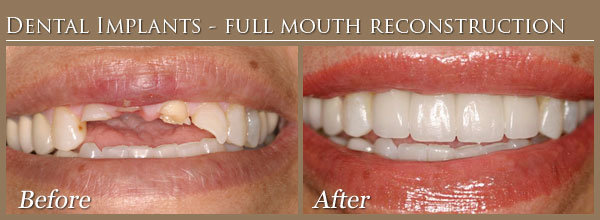
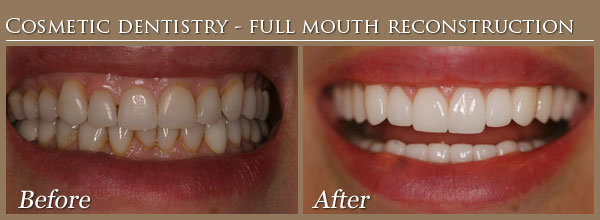
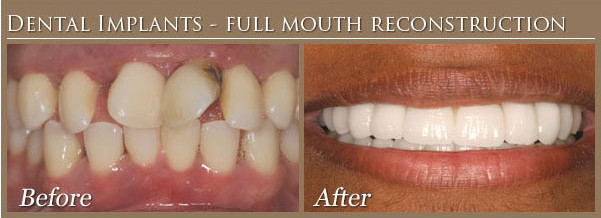
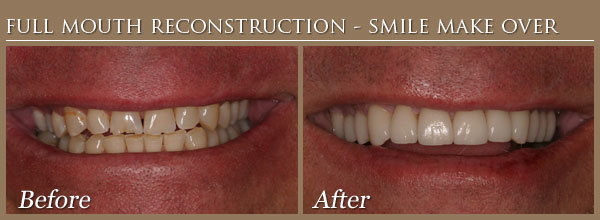
Steps to get Porcelain Veneers
Free Consultation and Free CT-Scan
If your dentist approves you for porcelain veneers, you’ll schedule an initial appointment. During that visit, your dentist will probably give you a local anesthetic. Then she or he will take a little enamel off of the teeth that will receive porcelain veneers. With less enamel, there’s more room for the veneers.
Measurement
Next, your dentist will make a mold of your teeth and perhaps take X-rays. Also, your dentist will choose a veneer shade to match the rest of your teeth. Finally, she or he might give you temporary veneers while your permanent ones are under construction at a dental lab.
2nd visit
Several days will pass. When your porcelain veneers are ready, you’ll go back to your dental office. Your dentist will try them on and make final adjustments. Then you’ll get a cleaning, and your teeth will get polished.
Bonding Veneers with Your Teeth
At last, your porcelain veneers will be bonded to your teeth. To start this process, your dentist will etch your teeth — that is, roughen them so that they’re ready for the veneers. Then the veneers will be attached with dental cement.
Final Step
Once the porcelain veneers are on, your dentist will shine a light on them to quickly harden the cement. Afterwards, your dentist will study each tooth, make any necessary adjustments to the veneers, and clean up the remaining bits of cement.
Most likely, you’ll have a follow-up appointment within a few weeks. Your dentist can then make sure that your veneers are in good shape.
Who Is a Candidate for Veneers?
To be eligible for veneers, you should enjoy good oral health. And you should be diligent about dental care. That is, you ought to brush and floss daily, and you should routinely go for dental checkups.
If you’re dealing with tooth decay, gum disease, or other oral problems, you’ll need treatment before you can get veneers.
Additionally, you shouldn’t grind your teeth. You might damage your veneers that way. If you only grind your teeth while you sleep, you might use a mouth guard for protection. Plus, you shouldn’t be in the habit of biting hard substances like your fingernails or certain candies.
What’s more, your teeth need to have an adequate amount of enamel. After all, they must be capable of losing some enamel. And, if you have any severely misshapen or crooked teeth, your dental veneers might not hold up over time. In that case, your dentist will probably identify a different course of action.
Similarly, if you have a significantly large gap between teeth, you might seek another remedy.
See also Veneers Cost in os Angeles
How to Care for Your Veneers
To protect your veneers, brush your teeth at least twice a day. As the American Dental Association recommends, choose a toothbrush with soft bristles and a toothpaste that’s nonabrasive.
Floss at least once a day as well. Furthermore, an antiseptic mouthwash is a great sanitizer. It’s a good idea to wash your mouth out every day. On top of that, visit your dentist twice a year for cleanings and checkups.
If you smoke, you should quit. Among many other reasons to avoid cigarettes, smoking can lead to stained teeth and stained veneers.
Where to Get Veneers in Los Angeles
Maybe you’re interested in veneers now. However, you might be wondering if it’s hard to find a dentist that do veneers. Plus, how much do veneers cost, and what’s the best place for veneers in the Los Angeles area?
Southland Dental Care in Sherman Oaks provides top-notch dental services, including cosmetic dentistry procedures. Our dentists are friendly, experienced, highly skilled, and widely trusted. And they’re adept at helping patients choose the right treatments, whether they’re veneers, crowns, caps, or something else.
Click here to learn more about the cost of veneers. And please contact us at any time. We at Southland Dental Care offer 100 percent complimentary dental consultations. We look forward to hearing from you, and we look forward to seeing you smile!










